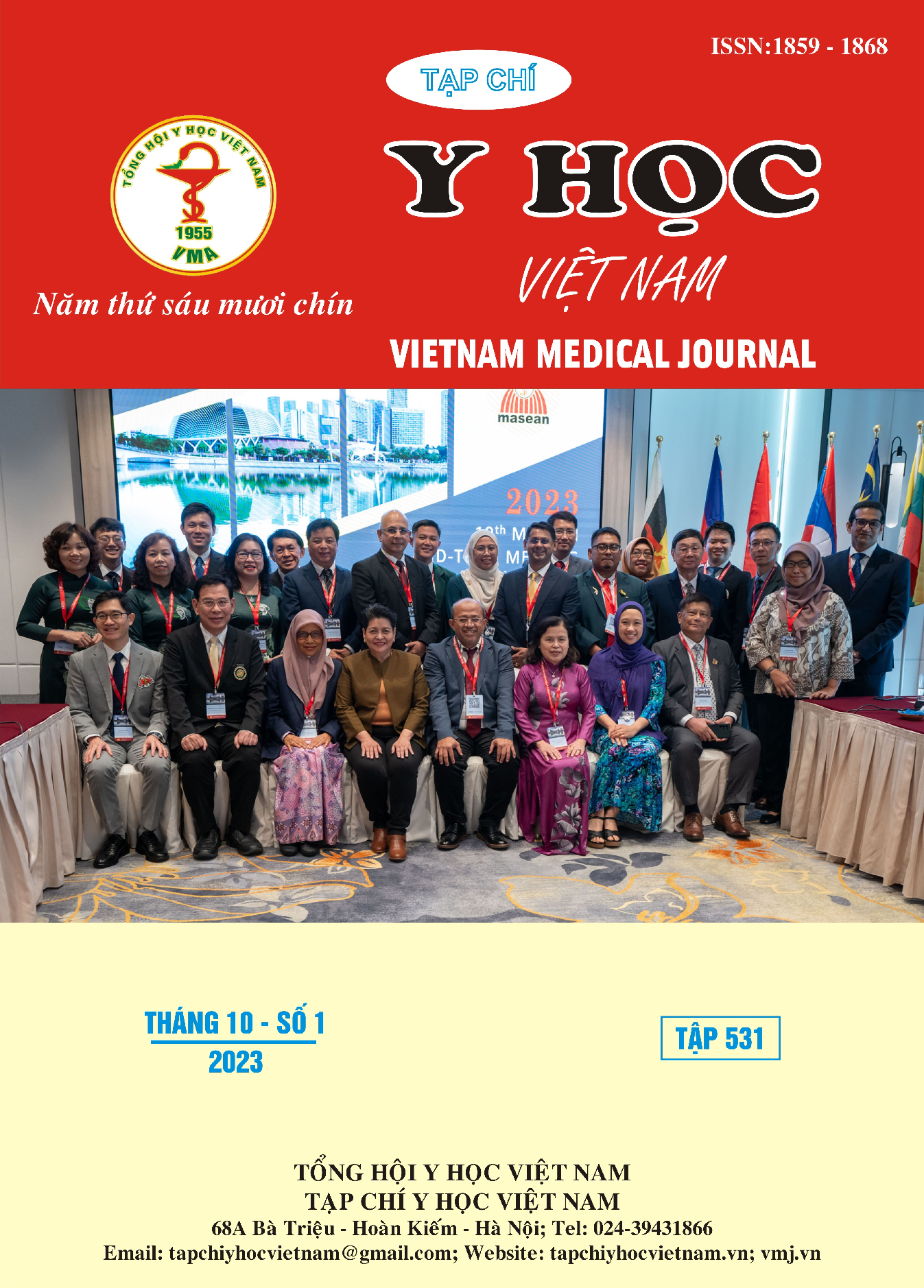PHÂN TÍCH MÔ HÌNH BỆNH TẬT NỘI TRÚ TẠI BỆNH VIỆN THỐNG NHẤT GIAI ĐOẠN 2013 - 2020
Nội dung chính của bài viết
Tóm tắt
Mở đầu: Đặc điểm mô hình bệnh tật là một trong những cơ sở khoa học để bệnh viện thống kê tổng quát cơ cấu bệnh, xây dựng kế hoạch phù hợp nhằm đáp ứng nhu cầu khám chữa bệnh và nâng cao công tác thực hiện nhiệm vụ chức năng của các khoa phòng tốt hơn trong tương lai. Mục tiêu nghiên cứu: Phân tích mô hình bệnh tật điều trị nội trú tại Bệnh viện Thống Nhất TP.HCM giai đoạn 07/2013 – 2020 theo mô hình bệnh tật và tử vong ICD-10. Đối tượng và phương pháp: Nghiên cứu hồi cứu, thực hiện thông qua việc hồi cứu dữ liệu về tình hình khám chữa bệnh nội trú tại Bệnh viện Thống Nhất TP.HCM trong giai đoạn 07/2013 – 2020. Chọn tất cả người bệnh điều trị nội trú tại Bệnh viện Thống Nhất trong giai đoạn này có chẩn đoán bệnh bằng mã ICD-10. Kết quả: Phân loại bệnh chính theo ICD-10: Chương IX là chương bệnh có tỷ suất mắc trên 1000 người bệnh cao nhất, có xu hướng giảm nhẹ vào giai đoạn 07/2020 với tỷ lệ giảm là 13,60%. Trong giai đoạn 7/2013 – 12/2017, chương X và chương XI là 02 chương bệnh mắc phổ biến tiếp theo nhưng tỷ suất mắc giảm dần. Chương II có sự gia tăng rõ rệt, trở thành chương bệnh phổ biến thứ 2 (tỷ suất mắc tăng từ 100,40 ca/1000 người bệnh vào 7-12/2013 đến 127,05 ca/1000 người bệnh vào 7-12/2020). Chương XIII cũng ghi nhận sự gia tăng mạnh mẽ với tỷ lệ tăng trưởng là 98,73%, trở thành chương bệnh phổ biến đứng thứ 4 vào 7-12/2020. Phân loại bệnh kèm theo ICD-10: Giai đoạn 7-12/2020 chứng kiến sự gia tăng bùng nổ của chương IX với 747,83 ca mắc/ 1000 người bệnh, tăng hơn 3,22 lần so với thời điểm 7-12/2013 (231,92 ca/1000 người bệnh). Chương X và chương XI là 2 chương bệnh đứng thứ 2 và thứ 3 trong hầu hết các giai đoạn nghiên cứu. Tại 7-12/2020, nghiên cứu ghi nhận sự tăng trưởng mạnh mẽ khi chương IV trở thành chương bệnh phổ biến thứ 2 với 421,87 ca/1000 người bệnh. Kết luận: Nghiên cứu đã cho thấy xu hướng tăng giảm của các chương bệnh và xác định các bệnh thường gặp, cung cấp cho bệnh viện một số thông tin về đặc điểm mô hình bệnh tật cũng như sự biến động các chương bệnh của Bệnh viện Thống Nhất giai đoạn 07/2013-2020.
Chi tiết bài viết
Từ khóa
mô hình bệnh tật, nội trú, ICD-10, Bệnh viện Thống Nhất
Tài liệu tham khảo
2. Forecasting: Principles and Practice (3rd Ed). Accessed June 14, 2023. https://otexts.com/fpp3/
3. Võ VT, Trần MH, Võ TXĐ, Lê SS. Khảo sát mô hình bệnh tật và tử vong tại Bệnh viện Thống Nhất năm 2010. Tạp Chí Học Thành Phố Hồ Chí Minh. Tập 16-Số 1. Accessed June 14, 2023. https://yhoctphcm.ump.edu.vn/index.php?Content=ChiTietBai&idBai=9832
4. Vos T, Lim SS, Abbafati C, et al. Global burden of 369 diseases and injuries in 204 countries and territories, 1990–2019: a systematic analysis for the Global Burden of Disease Study 2019. The Lancet. 2020;396(10258):1204-1222. doi:10.1016/S0140-6736(20)30925-9
5. Boutayeb A. The double burden of communicable and non-communicable diseases in developing countries. Trans R Soc Trop Med Hyg. 2006;100(3):191-199. doi:10.1016/j.trstmh.2005.07.021
6. Anwar MY, Lewnard JA, Parikh S, Pitzer VE. Time series analysis of malaria in Afghanistan: using ARIMA models to predict future trends in incidence. Malar J. 2016;15(1):566. doi:10.1186/s12936-016-1602-1
7. He Z, Tao H. Epidemiology and ARIMA model of positive-rate of influenza viruses among children in Wuhan, China: A nine-year retrospective study. Int J Infect Dis. 2018;74:61-70. doi:10.1016/j.ijid.2018.07.003
8. Liu L, Luan RS, Yin F, Zhu XP, Lü Q. Predicting the incidence of hand, foot and mouth disease in Sichuan province, China using the ARIMA model. Epidemiol Infect. 2016;144(1):144-151. doi:10.1017/S0950268815001144
9. Zhou L, Zhao P, Wu D, Cheng C, Huang H. Time series model for forecasting the number of new admission inpatients. BMC Med Inform Decis Mak. 2018;18(1):39. doi:10.1186/s12911-018-0616-8


